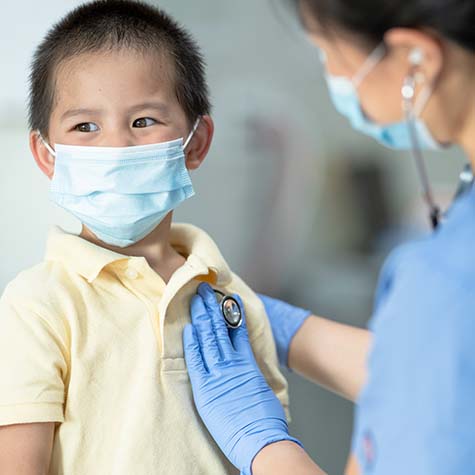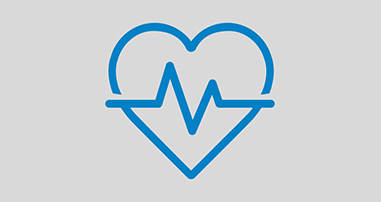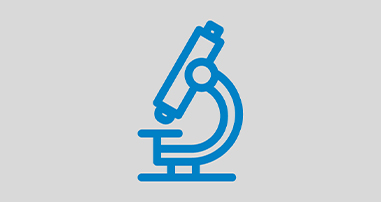Hypoplastic left heart syndrome, also known as HLHS, is a rate type of congenital heart defect (CHD) that alters the typical blood flow as the heart is formed, resulting in one working ventricle, or lower pumping chamber, instead of two.
As a fetus with hypoplastic left heart syndrome develops during pregnancy, the structures on the left side of the heart, which normally pump oxygen-rich blood from the lungs to the rest of the body, do not grow normally. This causes the left side of the heart to be abnormally small, or hypoplastic, and unable to pump blood as it should. As a result, the right side of the unborn baby’s heart, the part that pumps blood to the lungs, must do all of the work.
It’s possible for the right side of the heart to sustain blood flow thanks to a special blood vessel called the ductus arteriosus, which is open in the fetus before birth. Unfortunately, within hours to days after birth, the ductus arteriosus closes and severely diminishes blood flow to the body, restricting blood flow to the vital organs and eventually causing the baby to go into shock. Without treatment or early detection, hypoplastic left heart syndrome can be fatal——often within the first hours or days of life.
Hypoplastic left heart syndrome occurs in approximately 1,025 babies in the U.S. each year, according to the Centers for Disease Control and Prevention (CDC). It is one of the most complex congenital heart defects to manage, and the cause is unknown. Yet, the heart surgeons at the Children’s Healthcare of Atlanta Heart Center are trained to treat this heart condition while our multidisciplinary team provides support to patients and families every step of the way.
Hypoplastic Left Heart Syndrome
-
Hypoplastic Left Heart Syndrome (HLHS) and Surgeries
Watch us explain HLHS and the three surgeries our team performs to reconstruct these hearts: the Norwood, Glenn and Bidirectional Fontan procedures.
HLHS may be diagnosed during pregnancy by obstetrical or prenatal ultrasound, a test that provides images of a developing fetus. In fact, it's one of the most common CHDs picked up on routine screening.
If doctors suspect that your growing baby has hypoplastic left heart syndrome, you will be referred to a fetal cardiologist. This is a specialized pediatric cardiologist who diagnoses heart conditions in fetuses using an imaging test called a fetal echocardiogram. Using sound waves to produce high-quality images of a fetus’s heart while it is still inside the mother, this test gives detailed information on how the heart is functioning. Unborn children with HLHS will have a smaller than normal left ventricle and aorta, as well as abnormal heart valves. A prenatal diagnosis allows doctors to create a plan for your child to be delivered safely.
In some cases, hypoplastic left heart syndrome may be diagnosed shortly after a baby is born. A newborn with hypoplastic left heart syndrome may have a heart murmur, but some babies may not have any symptoms during the first few days of life. If the condition is undetected, a baby may quickly begin to develop serious symptoms that could include:
- Breathing problems
- Loss of appetite
- Pounding heart
- Weak pulse
- Bluish skin color
If a healthcare provider hears a heart murmur or identifies these symptoms, they will typically use an echocardiogram to make a diagnosis.
Hypoplastic Left Heart Syndrome
See how the team of nationally ranked surgeons at the Children’s Heart Center treat hypoplastic left heart syndrome (HLHS).
Watch VideoStabilization
After birth, an infant with hypoplastic left heart syndrome is treated with prostaglandins, a medicine that is infused into a baby’s bloodstream to keep the patent ductus arteriosus (PDA) open. This allows the right side of the heart to continue pumping blood directly to the body, keeping the baby stable and reducing the risk of shock.
Shortly after birth, an infant may also need:
- Catheters, which are usually placed in the blood vessels of the umbilical cord, that allow the care team to give medicine and draw blood for testing
- Medicines to help strengthen the heart muscles and help the body get rid of extra fluid
- Respiratory treatments, such as mechanical ventilation to help balance the flow of blood to the body and lungs
- Monitoring to detect organ dysfunction
Heart Surgery
Children with hypoplastic left heart syndrome will typically require multiple surgeries to re-reroute blood flow through the heart. The staged reconstruction includes a series of three heart surgeries that are performed at different times throughout childhood. These surgeries do not repair the left ventricle, but they do reconfigure the cardiovascular system to make the heart function as normally as possible, increasing blood flow to the body, while bypassing the poorly functioning left side of the heart. These three surgeries include:
Norwood procedure: The Norwood procedure is usually performed within the first week of an infant’s life. During this procedure, the surgeon creates a new and enlarged aorta by combining the original tiny aorta and the well-formed pulmonary artery to allow blood to flow freely to the body. Then, a small tube graft is placed either from an artery to the lung vessels (called a modified Blalock-Taussig-Thomas shunt) or from the right ventricle to the lung vessels (called a Sano shunt).
Bidirectional Glenn procedure: Typically performed when a child is 4 to 6 months old, this surgical procedure involves connecting a large vein called the superior vena cava to the pulmonary arteries, which allows blood that needs oxygen to go directly to the lungs. By bypassing blood away from the inadequate ventricle, this surgery can take some stress off the right ventricle for a few years until the next heart surgery is needed.
Fontan procedure: This procedure is usually performed when a child is 3 to 5 years old. During heart surgery, the large vein that returns blood from the lower part of the body to the heart, the inferior vena cava, is connected to the lung artery, which allows blood coming back from the body to go directly to the lungs. Once this is complete, oxygen-rich and oxygen-poor blood no longer mix in the heart, and the child’s blood oxygen levels become normal.

How will HLHS impact a child in the future?
For patients with hypoplastic left heart syndrome, the Children’s Heart Center focuses not only on heart health, but growth and development from infancy through childhood to promote a good quality of life. Infants born with hypoplastic left heart syndrome require follow-up visits with a cardiologist throughout their lifetime to monitor their progress. They’re often required to take heart medications that help the heart work as efficiently as possible, and they will undergo frequent testing to monitor their heart health. If the heart becomes weak over time, a heart transplant may be necessary. After surgery, children who undergo a heart transplant will need to take medication for the rest of their lives to help prevent the body from rejecting the heart.
At Children's, our cardiothoracic surgery team is dedicated to the well-being and care of children of all ages—from birth to 18—who have been diagnosed with a congenital heart defect.
- Paul Chai, MD, Chief of Cardiothoracic Surgery and Co-Chief of the Children's Heart Center
- Subhadra Shashidharan, MD, Associate Chief, Cardiothoracic Surgery
- Joshua Rosenblum, MD, PhD
- Fawwaz Shaw, MD
- Mohan John, MD
- Melanie McBrayer, CPNP
Advancements and Innovation in Pediatric Heart Care
Contact Us 404-256-2593



